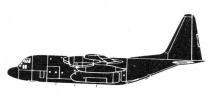Incident Overview

Description
During the approach to landing at Ali Air Base, Iraq the crew configured the Learjet C-21A jet to lose excess altitude. The crew disregarded multiple audible and visual warnings that the aircraft sink rate was excessive and failed to take corrective action. As a result of the excessive speed, rate of descent, partial landing configuration and ten knot tailwind, the airplane touched down approximately two-thirds down the runway. There was insufficient remaining runway length available to stop. It departed the prepared surface and came to rest 200 feet off the departure end of the runway. The airplane sustained approximately $1,831,259 in damage. The plane was dismantled and later destroyed (set ablaze) by soldiers from the 68th Transportation Company, 749th Combat Sustainment Support Battalion, 4th Sustainment Brigade, 310th Expeditionary Sustainment Command, during a training exercise on Contingency Operating Base Adder, Iraq, July 5-15, 2011. The accident investigation board (AIB) president found clear and convincing evidence that the mishap crew failed to sufficiently reduce speed and altitude during their approach to execute a normal landing, failed to complete the appropriate checklist for a high speed partial flap landing, and failed to recognize that there was insufficient runway remaining to safely land. Finally, the mishap crew failed to initiate a ‘Go-Around’ to correct the aforementioned deviations. Additionally, the AIB president also found sufficient evidence that skill-based errors, judgment and decision-making errors, cognitive factors, psycho-behavioural factors, coordination, communication and planning factors, and planning inappropriate operations all were substantially contributing factors to the mishap.
Source of Information
http://www.centaf.af.mil/news/story.asp?id=123264559http://www.centaf.af.mil/news/story.asp?id=123264559Primary Cause
Failure to adequately reduce speed and altitude during the approach, resulting in excessive speed and altitude, combined with insufficient runway remaining to safely land.Failure to adequately reduce speed and altitude during the approach, resulting in excessive speed and altitude, combined with insufficient runway remaining to safely land.Share on:




